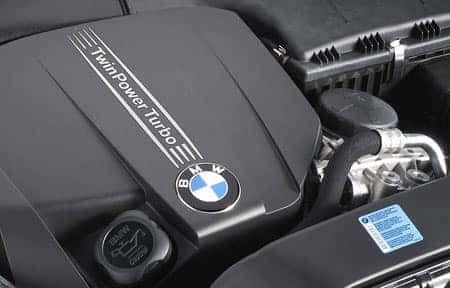Why the BMW Engine Is Thought About Among the very best in Deluxe Cars
Why the BMW Engine Is Thought About Among the very best in Deluxe Cars
Blog Article
Exploring the Evolution of Burning Engines in Modern Transportation Equipments
As we browse the landscape of modern transportation, the evolution of burning engines stands as a testimony to human resourcefulness and engineering prowess. The interplay of background, technology, and environmental worries in shaping the trajectory of burning engines creates a story that is both informative and compelling.
Very Early Beginnings of Combustion Engines
How did the idea of combustion engines initial emerge in the very early phases of transportation development? The origins of combustion engines can be mapped back to the 17th century when the principles of inner burning were initial checked out.
The breakthrough moment featured the development of the very first successful gasoline-powered engine by Karl Benz in 1885 - bmw engine. This engine led the way for the growth of the modern-day car, revolutionizing transportation systems worldwide. Subsequent developments by Nikolaus Otto and Gottlieb Daimler even more refined combustion engine technology, causing the mass manufacturing of cars and the fast development of the transport market
These very early burning engines were identified by their simplicity and performance, laying the foundation for the complicated and powerful engines utilized in modern-day transport systems. The advancement of combustion engines has actually been critical fit the method we travel and transfer items, noting a considerable landmark in the background of transportation development.
Change to Internal Burning Innovation
The transition to inner combustion technology marked a pivotal shift in the development of transport systems. This change began in the late 19th century, with developers like Nikolaus Otto and Gottlieb Daimler creating the very first successful internal burning engines. These engines changed transport by providing a more reliable and effective option to vapor engines and electric motors.
One of the essential benefits of inner combustion engines was their capability to be scaled down to match vehicles, leading to the growth of automobiles and motorbikes. This shift from bulky, fixed engines to small, mobile ones led the way for the contemporary transport systems we see today.
The shift to inner combustion modern technology likewise stimulated developments in fuel technology, resulting in the growth of gas and diesel as main fuel sources for cars. This shift not just made transport extra obtainable to the masses yet additionally laid the structure for the oil and gas sector to end up being important to global economic climates.
Effect of Combustion Engines on Transport
The adoption of burning engines in transport systems catalyzed a profound shift in the effectiveness and speed of global mobility. Burning engines revolutionized transport by giving a flexible and trusted source of power for numerous automobiles, consisting of vehicles, aircrafts, ships, and vehicles. This innovation substantially boosted the capacity for people and products to move over cross countries in shorter time frameworks, bring about raised connectivity between areas and countries.
In addition, the prevalent use burning engines has had a substantial effect on financial growth. The capacity to transport goods efficiently has spurred trade and business, allowing organizations to broaden their markets and get to customers worldwide. This has actually helped with economic development and globalization, as products can now be delivered quicker and in larger amounts than in the past.
Nonetheless, the environmental influence of burning engines can not be neglected. The burning of fossil gas has led to air contamination and greenhouse gas emissions, adding to environment change and posturing health and wellness risks to populaces. bmw engine. Because of this, there is an expanding emphasis on developing different propulsion technologies to mitigate these adverse effects and develop an extra lasting future for transport
Technologies in Combustion Engine Style
Countless innovations in combustion engine style have actually propelled the advancement of transport systems over the years. One significant advancement is the advancement of turbocharged engines, which use exhaust gases to drive a generator that compresses inbound air, allowing for more fuel to be burnt, causing raised power outcome without a significant increase in engine dimension. In addition, direct injection technology has actually enhanced gas performance and efficiency by precisely controlling the amount and timing of gas injected into the burning chamber. Variable shutoff timing systems have actually likewise changed engine style by enhancing airflow at various engine speeds, improving both power and performance. An additional substantial development is the integration of lightweight products such as carbon fiber and aluminum alloys, reducing total engine weight and boosting car fuel economic climate. Moreover, improvements in computer-aided design have made it possible for engineers to optimize engine performance and efficiency with simulations before physical prototypes are built, conserving time and resources in the growth procedure. These advancements jointly add to the constant renovation of combustion engines in contemporary transportation systems.
Future Trends in Combustion Engine Development
With innovation improvements driving continuous development, the future of burning engine growth is poised to change transportation systems worldwide. One of the key trends in burning engine advancement is the press in the direction of better effectiveness and reduced discharges. Producers are investing heavily in r & d to improve engine efficiency while satisfying stringent ecological laws. This consists of the integration of innovative fuel shot systems, boosted turbocharging approaches, and making use of lightweight materials to maximize fuel consumption and lower carbon emissions.
One more prominent fad is the adoption of hybrid technologies in burning engines. Crossbreed engines incorporate standard combustion modern technology with electrical power, using improved fuel performance and reduced exhausts. As the automobile market changes towards electrification, crossbreed burning engines are seen as a transitional option that bridges the void between standard automobiles and totally electrical ones.
In addition, the integration of smart technologies, such as expert system and information analytics, is anticipated to play a significant function in the future of burning engine development. These innovations can maximize engine efficiency in real-time, causing a lot more efficient combustion procedures and improved total automobile performance. Embracing these future patterns will not just drive innovation in combustion engine development however additionally contribute Source to a much more environmentally pleasant and sustainable transportation ecological community.

Final Thought
In final thought, the advancement of burning engines in contemporary transport systems has been noted by substantial developments read the full info here in modern technology and style. From the early starts of combustion engines to the transition to interior burning modern technology, these engines have had a profound effect on transport. Advancements in burning engine layout remain to drive progress in this area, with future fads concentrating on additional enhancing effectiveness and lowering emissions. The future of combustion engines in transportation looks appealing as study and development efforts remain to press limits.
The origins of combustion engines can be mapped back to the 17th century when the principles of inner burning were very first discovered. These engines changed transport by supplying a more effective and reliable choice to heavy steam engines and electric motors.

Report this page